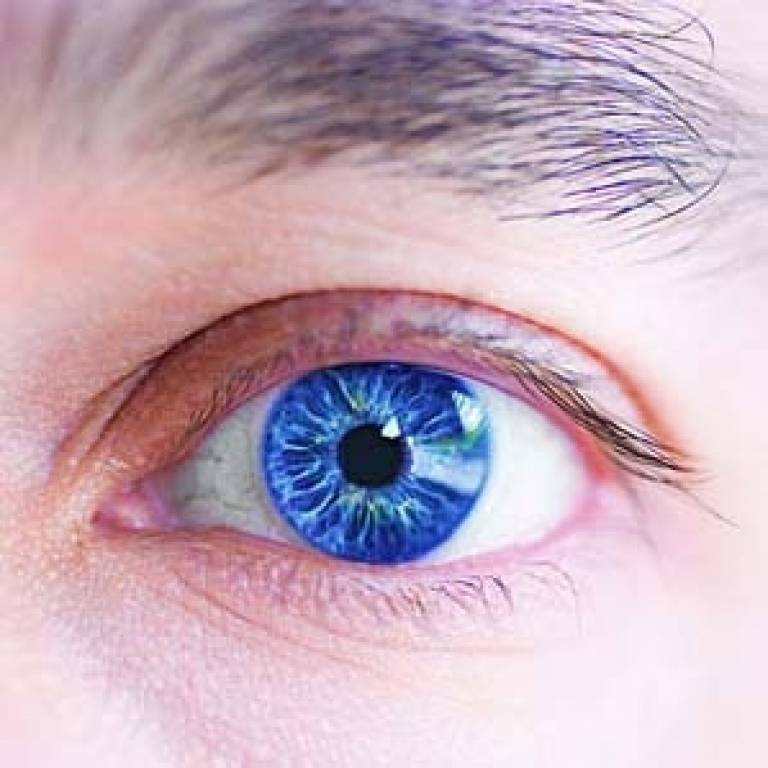Stem cell technique offers new potential to treat blindness
22 September 2010
Links:
 ucl.ac.uk/stemcells/" target="_self">UCL Centre for Stem Cells and Regenerative Medicine
ucl.ac.uk/stemcells/" target="_self">UCL Centre for Stem Cells and Regenerative Medicine
UCL scientists are pioneering a stem cell treatment to replace diseased parts of the retina, which could lead to a future treatment for retinal diseases that affect around 3,000 children in the UK.
The researchers from UCL Institute of Child Health and UCL Institute of Ophthalmology, also members of the UCL Centre for Stem Cells and Regenerative Medicine, successfully implanted cells from healthy mice into mice with an inherited form of childhood blindness called Leber Congenital Amaurosis (LCA).
The implanted cells express a gene called Crx which is needed to make healthy cone and rod photoreceptors. The cells were able to integrate with the retina and become new cone photoreceptors. This is the first time this has been achieved. Further studies are needed to demonstrate whether it is possible to restore sight using this method.
Dr Jane Sowden from the UCL Institute of Child Health, who led the study, said: "We have shown for the first time that it is possible to transplant new cone photoreceptors into the mature retina. The newly-developed cones looked as good as new. This is an important step forward as cone photoreceptors are essential for reading vision and for colour vision and loss of this type of cell has the biggest impact on sight.
"It may be possible to translate this success into treatments for humans. Recent research has shown that embryonic stem cells capable of self-renewal could provide an equivalent source of human cells that express the Crx 'photoreceptor-creating' gene and could be grown in the lab before being transplanted in the retina."
Professor Robin Ali from UCL Institute of Ophthalmology, who co-led the study, said: "We are now working to assess how much vision can be improved by photoreceptor cell transplantation and how effectively they can replace degenerating cells at different stages of disease. There is still a lot more basic research that needs to be carried out, but this is a very promising area that we hope will translate into a future treatment for patients who cannot see because their photoreceptors have degenerated."
One in 3,000 people are affected by incurable genetically inherited retinal disease. LCA is the most severe form that causes blindness from birth or during the first few months of life and affects around 200,000 children worldwide. These diseases cause the light sensitive photoreceptor cells in the retina to die, leading to loss of sight.
'Cone and rod photoreceptor transplantation in models of the childhood retinopathy Leber congenital amaurosis using flow-sorted Crx-positive donor cells' is published in Human Molecular Genetics today. The research was funded by the MRC, the Macula Vision Research Foundation and Fight for Sight.
Image: 'My eye! my beautiful eye' by Fausto Fernos on Flickr. Some rights reserved
UCL context
The UCL Centre for Stem Cells and Regenerative Medicine brings together 169 research groups from
several faculties, hospitals and institutes across UCL with a common interest in all aspects of
stem
cells, tissue engineering, repair and regeneration and the development
of their
therapeutic and biotechnological potential
Moorfields Eye Hospital, Great Ormond Street Hospital for Children, UCLH, the Royal Free and UCL together form UCL Partners, Europe's largest academic health science partnership.
Related news
AstraZeneca and UCL join forces in sight-related stem cell medicine
UCL wins Fight for Sight research grant and PhD
studentships
Lunch Hour Lecture: Stemming Vision Loss With Stem Cells
- Seeing is Believing
 Close
Close

